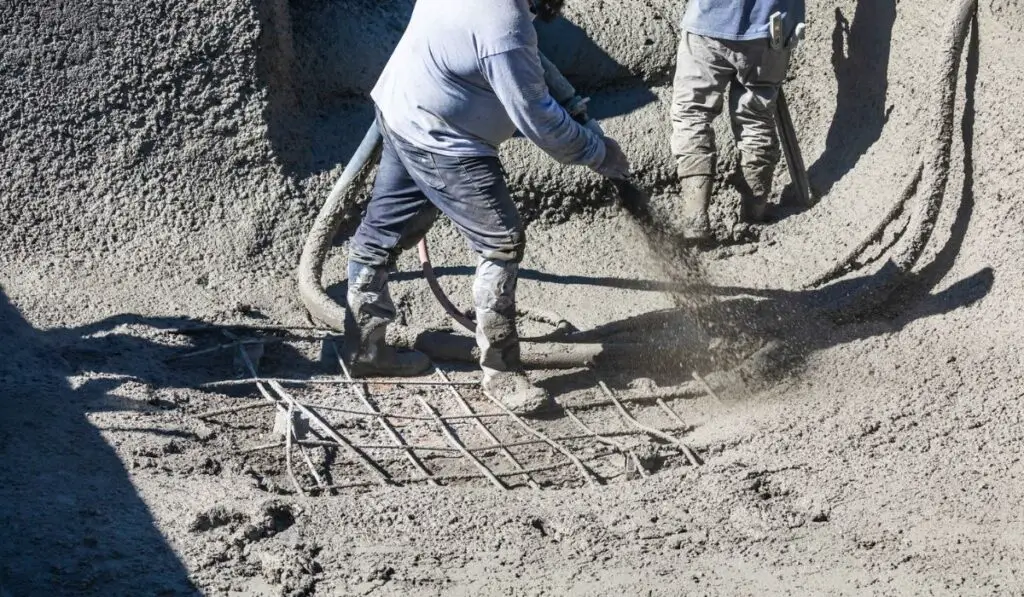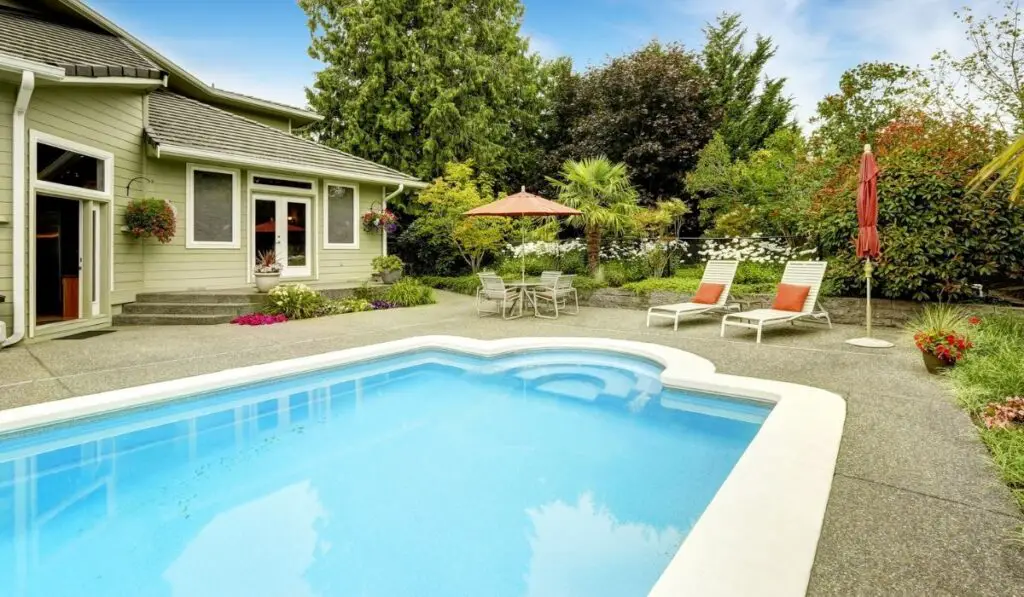Your swimming pool can be constructed from almost any tough, durable material, but shotcrete and gunite are two popular options that you’re likely to encounter if you’re considering building a pool. Both materials are types of concrete, but their application process and durability differ enough to warrant the question: Which material is superior?
Both gunite and shotcrete are types of concrete. The primary difference is that shotcrete is already mixed with water when workers apply it, while gunite is a dry concrete mix that’s combined with water just before it’s sprayed on. Gunite is more durable and better for your home’s resale value.
When it comes to pool materials, it’s always a good idea to carefully consider your options. After all, pools are a long-term investment and can be quite costly. So let’s take a closer look at how exactly gunite and shotcrete differ, which material is more durable and better for your home’s resale value, and how you can choose wisely between the two.
What Is Gunite?

It’s important to understand that shotcrete and gunite are simply different methods of applying concrete. The difference has to do with the point at which pool technicians add water to the concrete mixture. Gunite usually refers to a dry concrete mix, while wet concrete is known as shotcrete.
When constructing a gunite pool, technicians first load their equipment with premixed dry concrete. On the construction site, builders use a high-pressure hose to shoot the dry mixture to a nozzle, where they then introduce the water.
The wet mix, or gunite, sprays out onto the pool’s rebar framework at an extremely high velocity. A qualified nozzleman controls and monitors the application, increasing or reducing water levels to achieve the right consistency.
This process compresses the concrete as you apply it, ensuring that it maintains a higher quality and lasts longer than shotcrete.
What Is Shotcrete?
Keep in mind that shotcrete is basically a wet concrete mix. In order to apply this wet mix, pool builders start with thoroughly mixed concrete, which is delivered to the construction in a cement truck.
Similar to the gunite application process, workers then push the shotcrete through a tube or hose with a pressurized air gun. Because of the high speed and pressure, the concrete bonds to itself as soon as it hits your pool’s surface.
Which Material Is More Durable?
Gunite is generally more durable than shotcrete. This is because gunite usually dries faster than shotcrete, resulting in a much smoother pool surface and preventing any large cracks that might occur from concrete shrinkage.
Gunite is also able to withstand a pressure of up to 9,500 psi, which is a much higher number compared to shotcrete. If you think your pool will have to withstand large amounts of pressure, then it’s better to opt for a gunite pool.
How to Choose Materials Wisely
It’s important to understand that one material is not necessarily superior to the other. However, both of them have their own advantages and disadvantages.
Let’s look at what each material has to offer, so you can make the best decision:
Benefits of Gunite:
- It becomes harder and more durable upon curing.
- It’s prepared on-site, providing pool technicians with more work time.
- It has a higher compressive strength than shotcrete (7,000 – 9,500 psi).
- It delivers a smoother finish.
- It’s less expensive than shotcrete.
- You can start and stop the application without forming any cracks or weak points.
- It’s easier to clean than shotcrete.
- You can easily walk on the wet concrete mix without disturbing it.
- The hose is light and easy to use.
Drawbacks of Gunite:
- The manual addition of water increases the risk of error.
- There’s an increased risk of over-spray or rebound material, leading to more cleanup.
- Gunite finishing needs special paints.
- If rebound material is applied to the surface of the pool, it might result in cracks or weak spots.
- It requires a more qualified and experienced crew.
- Dry concrete can clog up the hose.
- The equipment needs a lot of maintenance.
Benefits of Shotcrete:
- It has a shorter application time than gunite.
- Fewer rebound materials mean there’s a lower risk of cracks and weak spots.
- It needs less equipment on the construction site.
- Since the material is pre-mixed, it forms a strong and consistent coating.
- Pre-mixed shotcrete eliminates the need for a highly qualified crew.
Drawbacks of Shotcrete:
- It’s Mmre expensive than gunite.
- It’s more susceptible to shrinkage cracks.
- It has a lower compressive strength than gunite (6,500 – 7,500 psi).
- The hoses are heavier and more difficult to use.
- It comes pre-mixed to the construction site, so technicians have less wiggle room when it comes to application time.
- Operators might need to add more water to the concrete mixture so that it doesn’t harden and compromise the strength and durability of your pool.
- A clogged hose can be difficult to clear, which can be dangerous for both the property and the crew.
Which Pool Material Is Best for Home Resale Value?

If you want to increase your home’s resale value, then it’s better to opt for a gunite pool. Gunite generally allows pool technicians to take more time to properly complete the project, enabling them to start and stop the application as needed.
Gunite is usually cheaper than shotcrete, and the additional time also helps ensure fewer errors during the construction process.
With its relatively low cost and high durability, gunite is an excellent building material. It forms smooth and durable pools that are likely to increase a property’s resale value.
